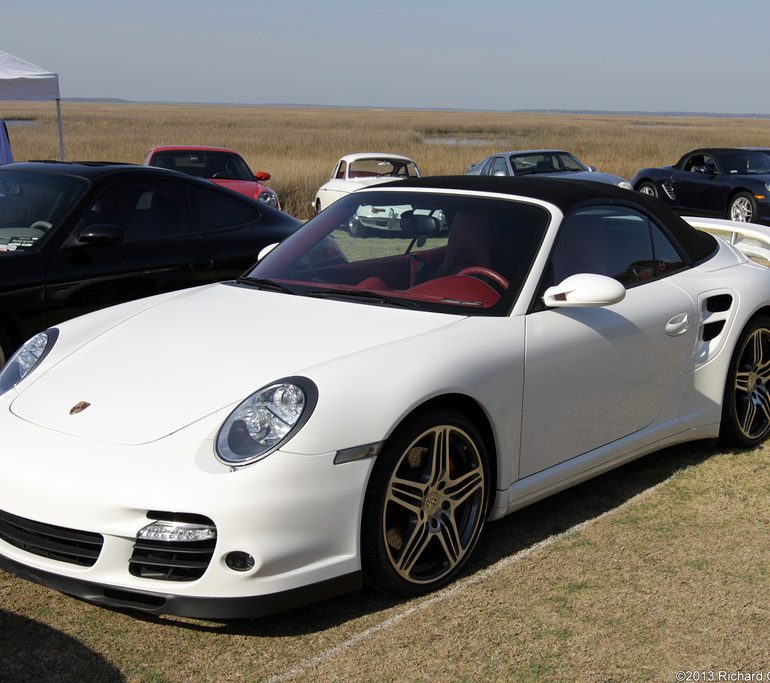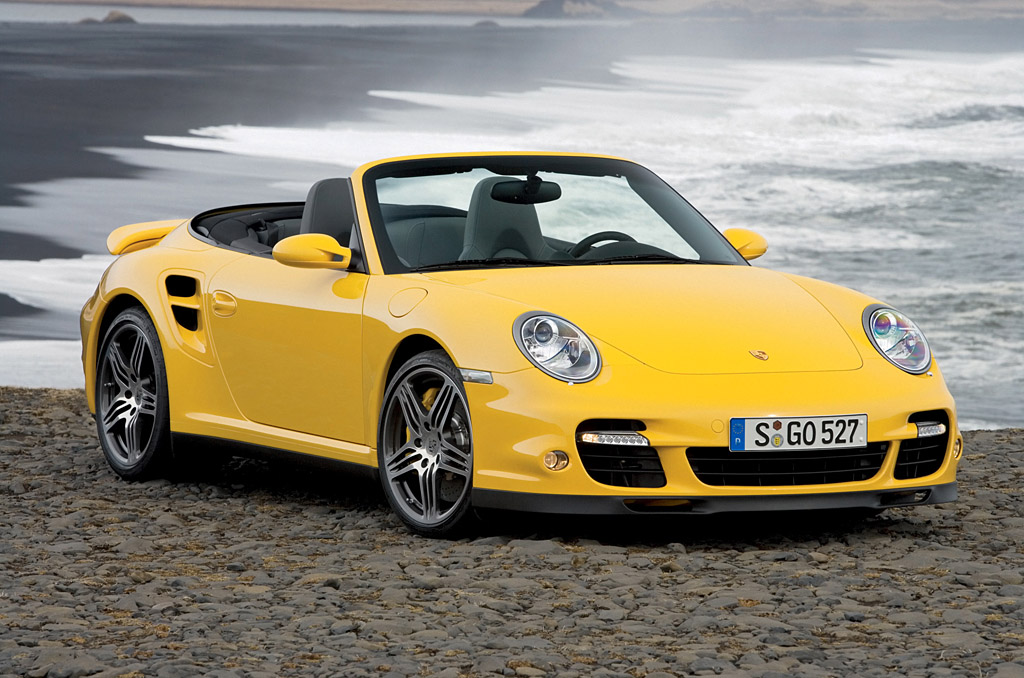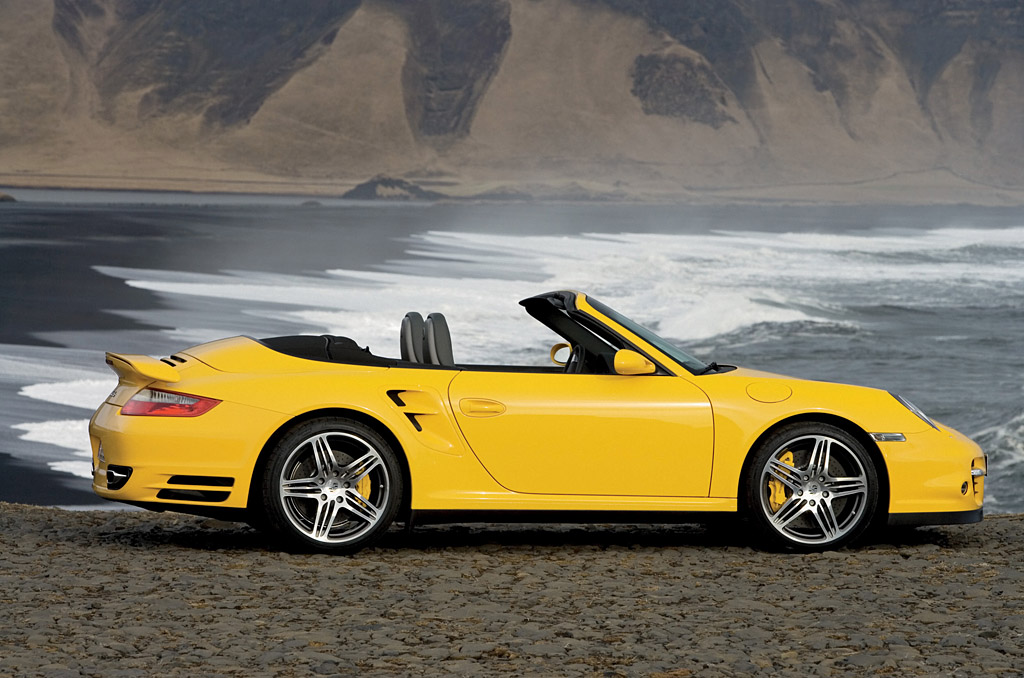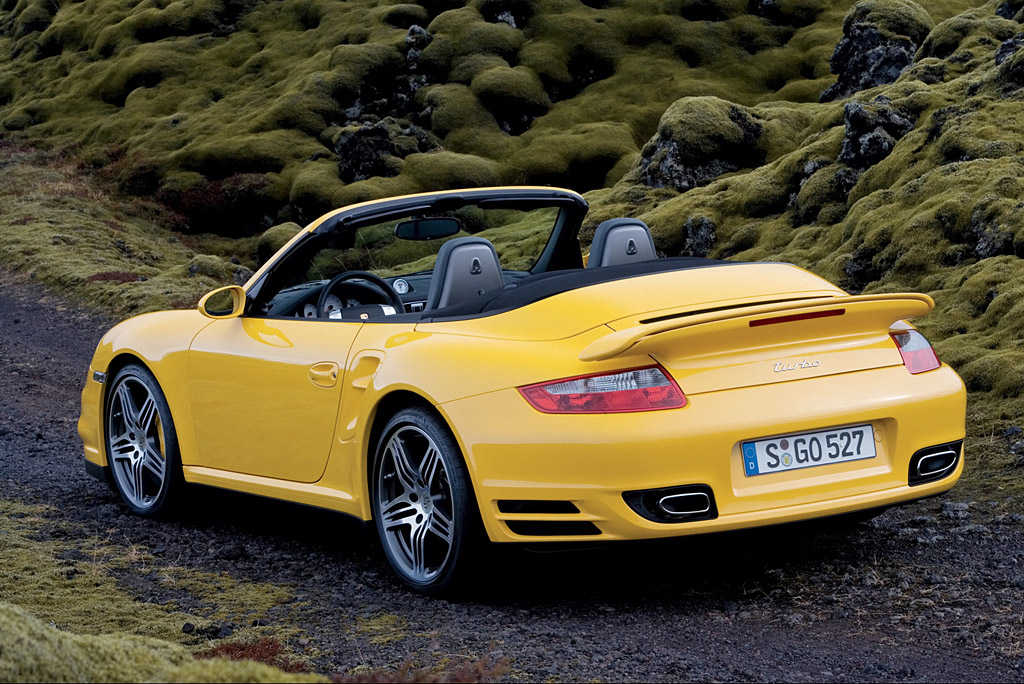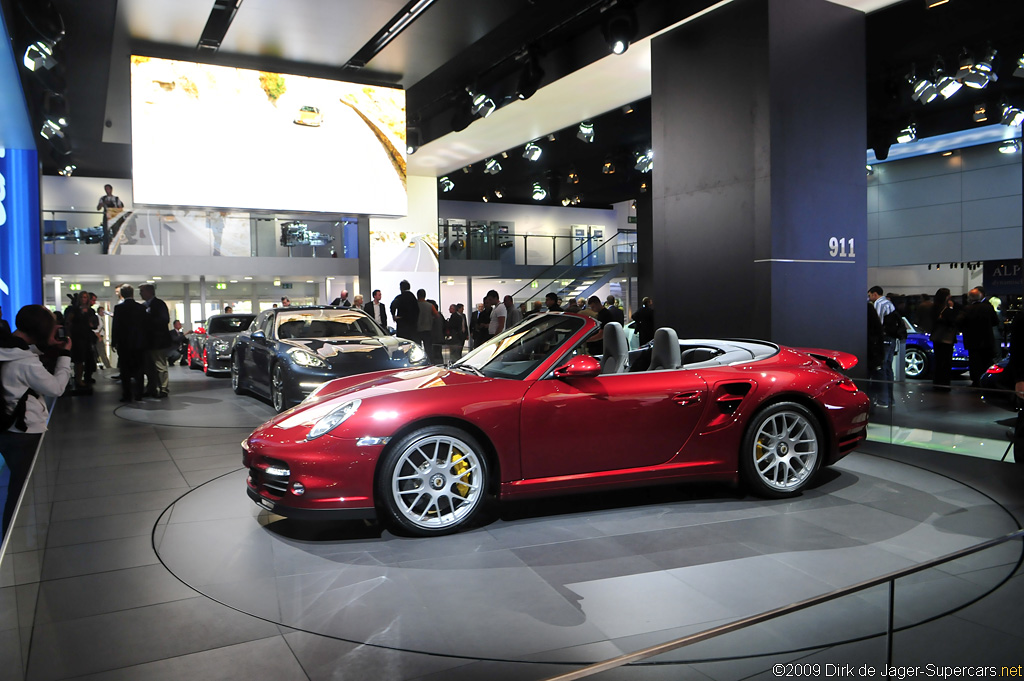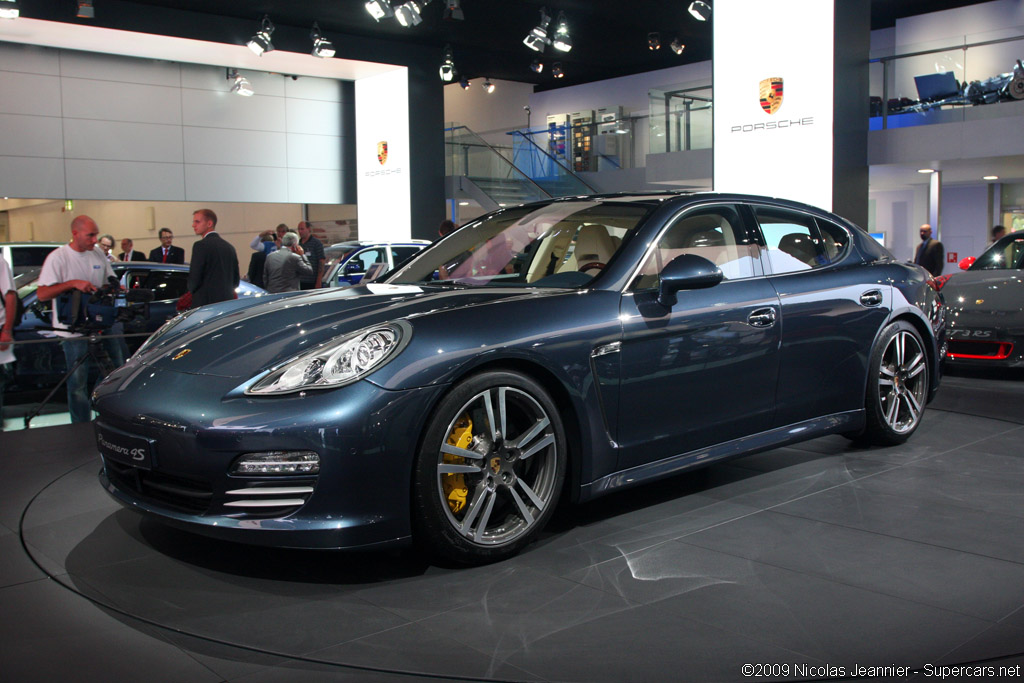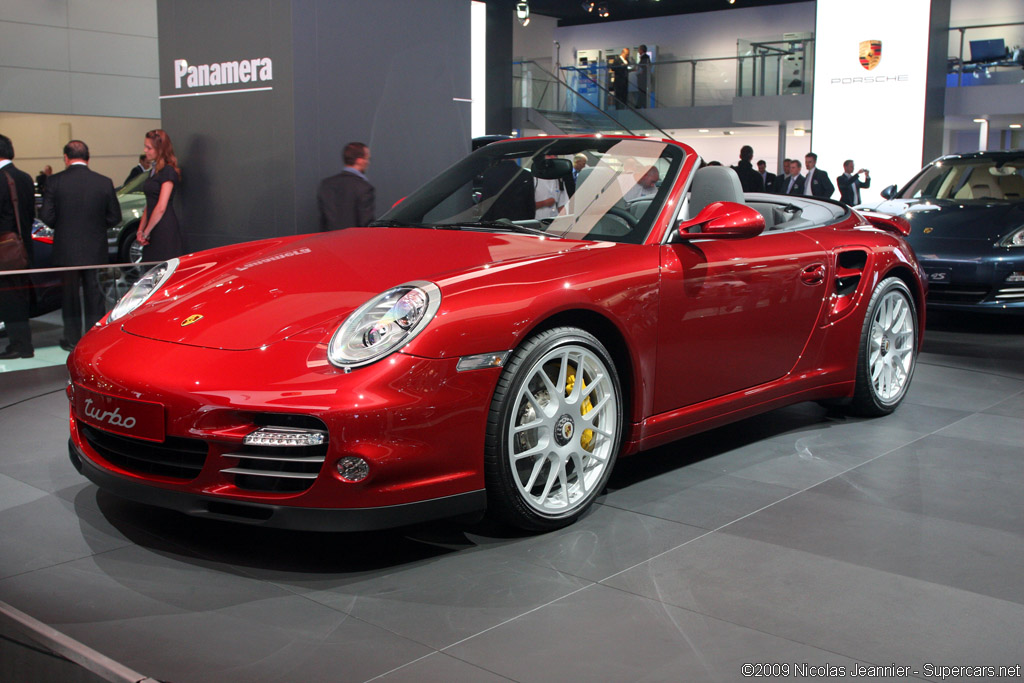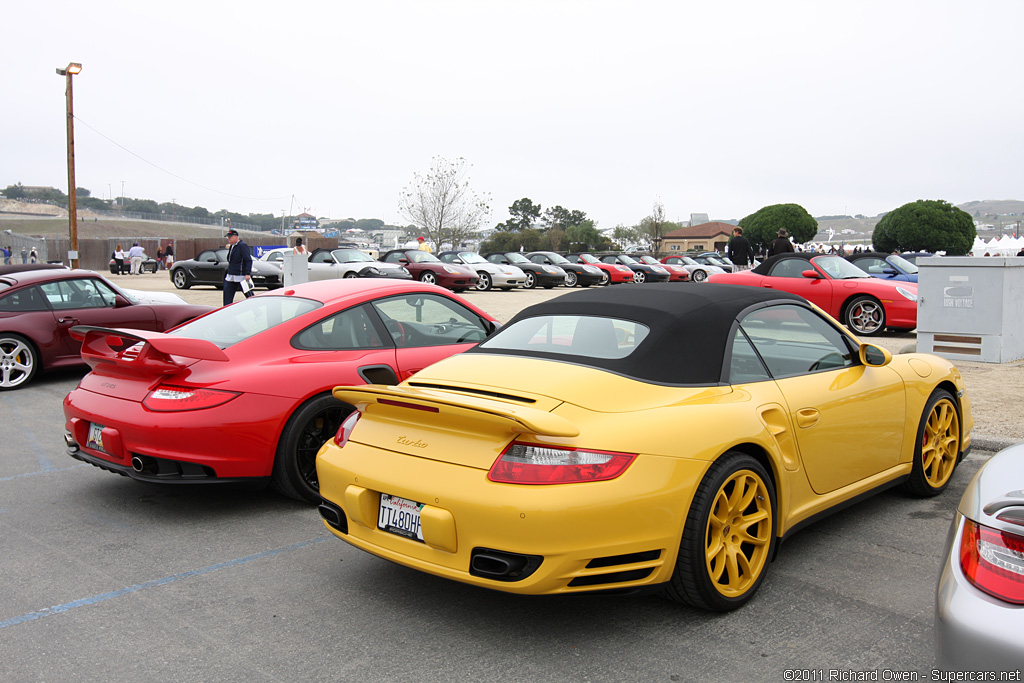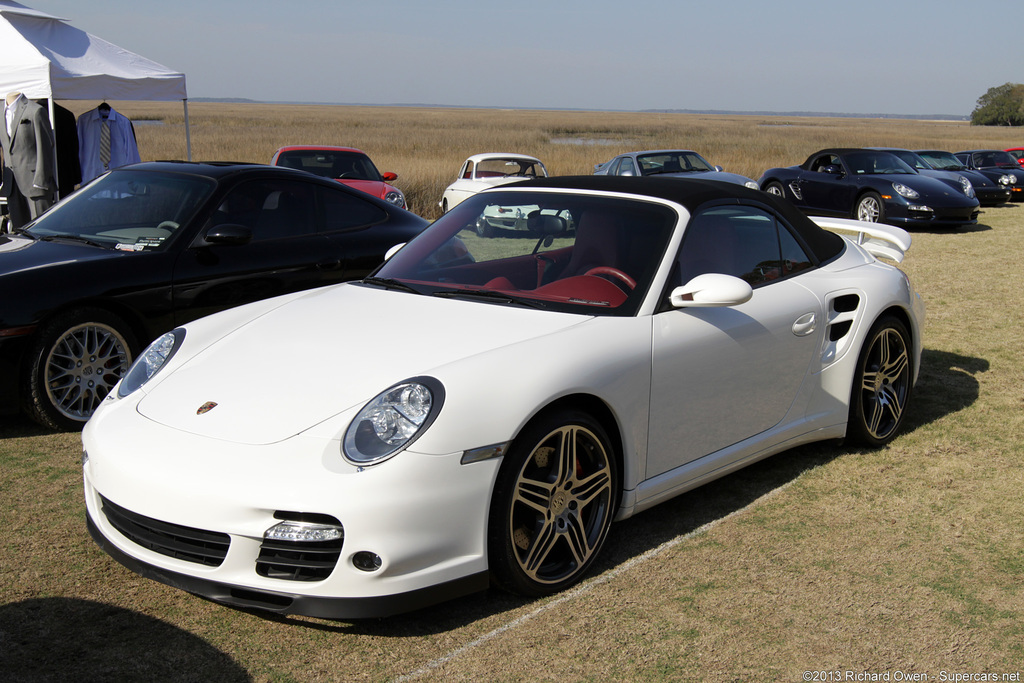2007 Porsche 911 Turbo Cabriolet
Porsche will be sending the new 911 Turbo Cabriolet to the starting line on September 8. The 20-year tradition within the 911 Series of the 911 Turbo with a classic soft top is continued with this open top model. Firstly, the open 2+2 seater offers the driving performance of a high-performance sports car while still providing convertible driving pleasure. Secondly, compared to the competition the 911 Turbo Cabriolet is economical in its fuel consumption, thanks to its deliberate design, outstanding aerodynamics and advanced engine technology
As with the 911 Turbo Coupe, the Cabriolet will also be powered by a 3.6 liter six-cylinder boxer engine with biturbo turbocharging and Variable Turbine Geometry (VTG). The powerplant already generates 480 hp (353 kW) and 620 Nm of torque at 1950 rpm. With the new, optional Sport Chrono Turbo Package, which includes an overboost function, up to 680 Nm is even intermittently possible. The manual transmission version can accelerate from 0 to 100 km/h in just four seconds. With Tiptronic S the time can be cut to 3.8 seconds. Both versions can reach speeds of up to 310 km/h. Fuel consumption for the 911 Turbo Cabriolet is 12.9 liters per 100 kilometers an exemplary value in the competitive environment.
In spite of the convertible-specific reinforcement of the chassis and automatic and the extendable rollover protection behind the rear seats, the open version of the 911 Turbo only weighs 70 kilos more than the Coup. The light, three-layer soft top, which can completely automatically be opened or closed in roughly 20 seconds, enables a low balance point.
Together with the running gear that is tuned to convertible-specific needs, which includes the active suspension system Porsche Active Suspension Management (PASM) as standard equipment, the new 911 Turbo Cabriolet offers the sporting driving performance typical for a Porsche 911 as well as extremely high driving safety together with appealing driving characteristics. The driving stability control Porsche Stability Management (PSM) and the managed all-wheel drive Porsche Traction Management (PTM) also contribute to its uncommon performance. The system with an electronically controlled multi-plate clutch can, according to the requirements, alternatively shift the drive output from the engine between the front and rear axles, and with shift intervals of a maximum of 100 milliseconds quicker than the reaction of the engine to load changes.
With a drag coefficient of Cw=0.31, the 911 Turbo Cabriolet travels at the level of the coup models. Together with the rear spoiler, which automatically extends at speeds from 120 km/h extending 30 mm further than with the Coup, the vehicle is the only standard series convertible that generates negative lift at the rear axle. Along with its passive safety systems, including six airbags as standard equipment and the comprehensive rollover protection system with steel tubing integrated into the windshield frame and an extendable rollover protection behind the rear seats the 911 Turbo Cabriolet also fulfils all legal requirements for passive safety applicable in the worldwide sales markets. Furthermore, it is equipped with one the most high-performance brake systems. The six-cylinder fixed-brake caliper up front stems from the Porsche Carrera GT. Upon request, the race-proven and light Porsche Ceramic Composite Brake (PCCB) ceramic brake system is also available for the 911 Turbo Cabriolet.
Also included in the extensive standard series equipment of the 911 Turbo Cabriolet are Bi-Xenon headlights, 19 inch forged wheels with two-tone appearance, an air conditioner, the wind deflector, the Porsche Communication Management (PCM) with the navigation module and 5.8 inch color monitor and the Bose Surround Sound System, among other things. The basic price in euro for the Turbo Cabriolet is EUR 126,600. In Germany the price is EUR 150,862 (including VAT and country-specific requirements).
In Detail
| type | Series Production Car |
| built at | Stuttgart, Germany |
| engine | Aluminum M96/70S Flat-6 |
| position | Rear Longitudinal |
| aspiration | Borg Warner Variable Turbine Geometry (VTG) Twin Turbos |
| valvetrain | DOHC, 4 Valves per Cyl |
| fuel feed | Bosch Motronic DME 7.8 Fuel injection |
| displacement | 3596 cc / 219.4 in³ |
| bore | 100 mm / 3.94 in |
| stroke | 76.4 mm / 3.01 in |
| compression | 9.0:1 |
| power | 357.9 kw / 480 bhp @ 6000 rpm |
| specific output | 133.48 bhp per litre |
| bhp/weight | 290.03 bhp per tonne |
| torque | 620 nm / 457.3 ft lbs @ 1950 rpm |
| body / frame | Unit Steel |
| driven wheels | 4WD w/PSM, PTM |
| wheel type | Aluminum Alloy |
| front tires | 235/35ZR19 |
| rear tires | 305/30ZR19 |
| front brakes | PCCB Ceramic Discs w/Brembro 6-Piston Calipers, ABS |
| rear brakes | PCCB Ceramic Discs w/Brembro 4-Piston Calipers, ABS |
| steering | Rack & Pinion w/Power Assist |
| f suspension | MacPherson Struts w/Lower Control Arms, Coil Springs, Gas Pressurized Twin-Tube Shock Absorbers, Anti-Roll Bar |
| r suspension | Multi-link w/Coil Springs, Single Sleeve Gas Pressurized Shock Absorbers |
| curb weight | 1655 kg / 3649 lbs |
| wheelbase | 2350 mm / 92.5 in |
| front track | 1490 mm / 58.7 in |
| rear track | 1548 mm / 60.9 in |
| length | 4450 mm / 175.2 in |
| width | 1852 mm / 72.9 in |
| transmission | 6-Speed Manual or 5-Speed Tip-Tronic |
| 0 – 60 mph | ~3.9 seconds |
| drag | 0.31 Cd |


